-
Posts
135 -
Joined
-
Last visited
-
Days Won
2
Content Type
Profiles
Forums
Downloads
Gallery
Posts posted by Götz Becker
-
-
QUOTE(crelf @ Nov 7 2007, 11:16 PM)
3. If it's required, then the 'requiredness' attribute propagates upward until it's satisfied (that means keep on going up until there's an explicit non-default data source).Would you then want the 'requiredness' attribute propagate into two inputs of the parent VI, if the input into child is calculated out of those, as well?
I hope this sentence makes any sense!?! This is the first time I try to philosophize in english

-
-
QUOTE(siva @ Sep 12 2007, 05:24 AM)
I my eyes every cluster and enums should be typedefs (always).
I normally have more confidence in the "Quotient Remainder" function for this.
just my 2 cents
and thanks again for sharing your code!
-
Hi all,
I confess, I am mainly a lurker

As a daily reader of the various topics, I discuss many of it with a colleague. Some things just for fun, others like the discussions about the various LVOOP issues are for my personal education in a subject area which I believe is crucial for my future as a LV-developer.
greetings from Munich
G. Becker
-
Yes, this is one place I guessed that there would be a buffer allocation, but the result is OK.
-
Hi all wireworkers,
I am working on my first LV 8.5 project and of cause I want to try the some new features of it.
One feature I am learning to love is the conditionial For Loop. When dealing with nested array of cluster this is a big time and BD-space saver.
The other thing is the new inplace structur. In the screenshot I am working on a large cluster with many nested cluster/array of clusters and at least the "show buffer allocation" indicates that really LV isn´t doing many allocations in this VI. I expected much more of them :thumbup:
-
Many thanks to both of you!
:worship:
The VI Analyzer showed the problem. Next time I´ll start with it when bug-hunting.
Greetings
Götz
-
Hi all wireworkers,
I recently had a hard time finding a nasty bug. Clearly bad programming since the "dbl 1" output is not wired. Is it possible to enable warnings for this type of thing, like the warnings for unwired front panel objects?
Any ideas how to automatic search these kind of problems?
The VI is saved as LV8.5
Download File:post-1037-1190284217.vi
greetings
from a sunny Munich with just a few days left before Oktoberfest

-
This is basically what I did. While moving the mouse in the controls menu LV crashed. :thumbdown:
-
Thanks for the input.
I just can´t get this thing working. Tried the custom probe which resulted in LV crashing.
The DAQmx task I create with wired scale name as input (which I can even see with highligthing on) just produce an error the first time I want to write out a value.
Enough trial and error for me today, I wrote a "Table Scaling"-VI myself and will stay away from DAQmx scales.
Greetings from a rainy and _gray_ Munich :-)
Edit:
The subVI I used to create my scale:
http://forums.lavag.org/index.php?act=attach&type=post&id=5873
-
I just tried to update my personal profile information at
http://forums.lavag.org/edit-profile-info.html
but I can´t save the changes because I always get the error :
"You entered an illegal date for your birthday. You may have chosen 30th February, for example."
I didn´t changed the default "--" entries at birth date.
-
Hi all,
can someone explain me please what "grey" probes stand for?
http://forums.lavag.org/index.php?act=attach&type=post&id=5869
Probe 9 in the attached picture doesn´t update, but with highligthing on or a connected indicator I see the correct value.
I am trying to get started with DAQmx custom scales but when I try to write using the task handle, it fails because the scale with name xxx is not found.
Greetings
-
-
Hi,
I have the "pleasure" to try to check and document a set of .dll-wrapper VIs. My main problem is that I need to check the call setups.
Is it possible to programmatically get the "Function Prototype" string displayed in the configure window of a Call Library Function Node?
I tried to print the VI documentation but I only get a picture of the BD. Using an invoke node with the VI-ref, I also only get access to the BD image. I have seen the new display option in the 8.2 Version for names in the connector. But the project is in 8.0.1 :-( . And even with the name display I don´t see the exact call setup like how strings are passed.
Any ideas or hints?
Thx in advance
-
The feedback node concept is nice, but I wonder why I see a warning sign.
I always have warnings on by default.
Strange thing in this case is, that the error/warning dialog shows a warning for the VI but no details about it given.
http://forums.lavag.org/index.php?act=attach&type=post&id=5333
-
Problem solved.
The C-Programmer of the .dll changed the new memory parts to some static allocation.
-
Hi,
how can I define the stack size for a RT App?
The problem is that we have a LVRT 8.0 application that mainly does .dll calls. Everthing is working fine when we test the .dll it on WinXP. The .dll is checked to not use unavailable functions on the RTSys. In fact the .dll worked for about a year but we had to change some memory management related parts and now it needs more stackmem. Now it just crashes the RT-PXI-controller with a kernel error when the new code is executed.
Any ideas?
Greetings from a warm and sunny Munich/Germany
-
Are the two inputs the indices for that 2D Array?
Then a simple "Index Array" is what you need. The function expands the index inputs depending on the dimension of the wired array input.
But i guess i didn
-
"build array" and "enqueue element" are adding memory... control those and you should be fine.
My common mistake or bad programming habit is to use "build array" in a loop to gather values. With small test data all works well, when running with real data things often get large and slow.
Another thing hit me once when using queues. I split some work in two threads with a queue in between, classic producer/consumer. classic mistake i made... consumer was much slower and the producer kept enqueueing stuff (it worked for a night until windows rejected to allocate more memory) . Now I always double check if I set a value for the maximum amount of elements when creating stuff with queues and that the producer waits if queue is full.
Another thing I had to learn the hard way, is to often use the "Show Buffer Allocations"-Tool.
Perhaps you could give a little more detail what the program does.
Hope this helps
(and feel to correct me if something is wrong)
-
I wouldn
-
When passing a large array through a loop tunnel, the original value must be copied into the array location at the beginning of each iteration, which can be expensive. The shift register does not perform this copy operation, but make sure to wire in the left shift register to the right if you don
-
While trying to find out why one of my FGPA-VI wont rebuilt anymore (I havent touched the code... it just broke
 ) I found some evil looking SubVI connection panels in the FPGA part of the vi.lib. Looks like a quick and dirty "Create subvi from selection". The main thing i dont understand... if i have the time to create a custom icon, it just dont makes any sense not to clean up the connection panel!?! :headbang:
) I found some evil looking SubVI connection panels in the FPGA part of the vi.lib. Looks like a quick and dirty "Create subvi from selection". The main thing i dont understand... if i have the time to create a custom icon, it just dont makes any sense not to clean up the connection panel!?! :headbang: -
I am developing a reporting application myself atm. Basically i am concatenating strings with LaTeX source code together (e.g. for a standard information header and a table for the different testresults). Main disadvantage is, that i have to create several files in a temporary folder and run the LaTeX program via system exec.
But the resulting PDF file is just very nice, including pagenumbers (which was the main reason why I dropped the idea of using HTML for reports).
Inclusion of a FP-object is planned in the near future, which is basically writing the FP-picture to a temp-file and inserting the right commands in the LaTeX source-string. Scaling of the graphic is then done by LaTeX.
Until now I am very pleased with the LV-LaTeX combo.
Perhaps i
-
One thing you could try is using the mysql command-line client in batch mode by calling it with the System exec.vi.
I don



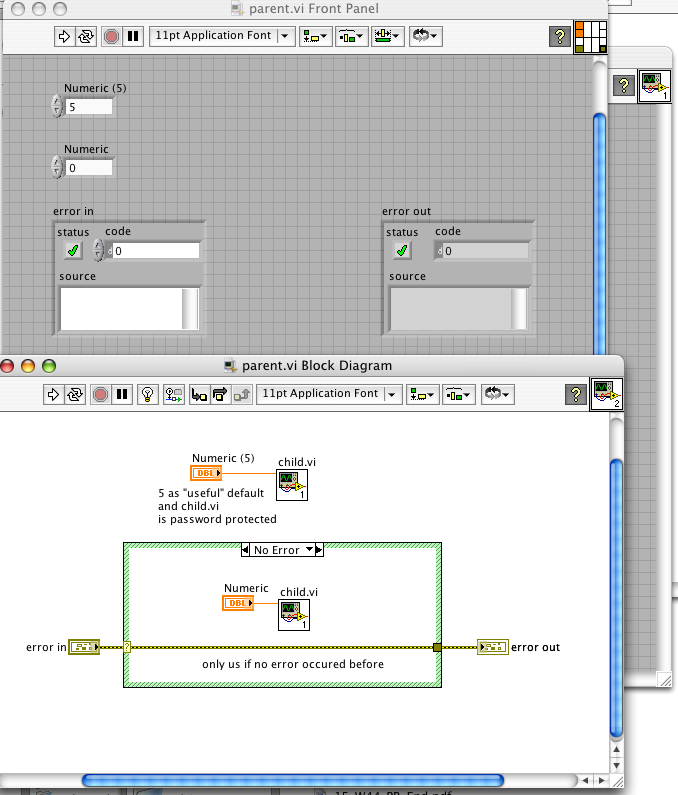
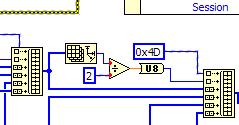
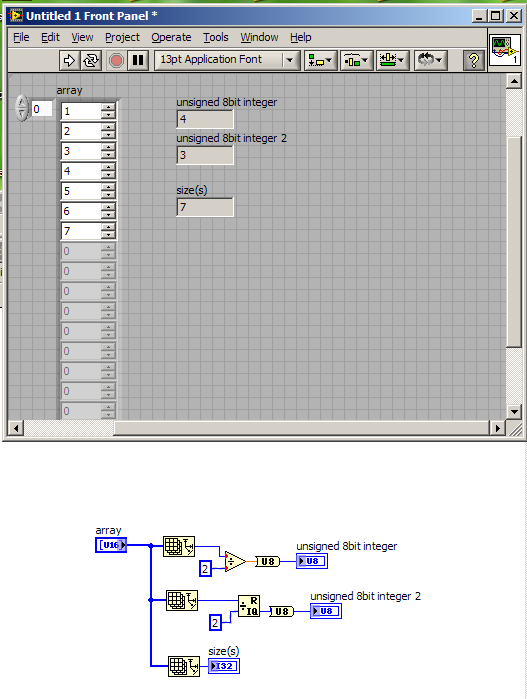

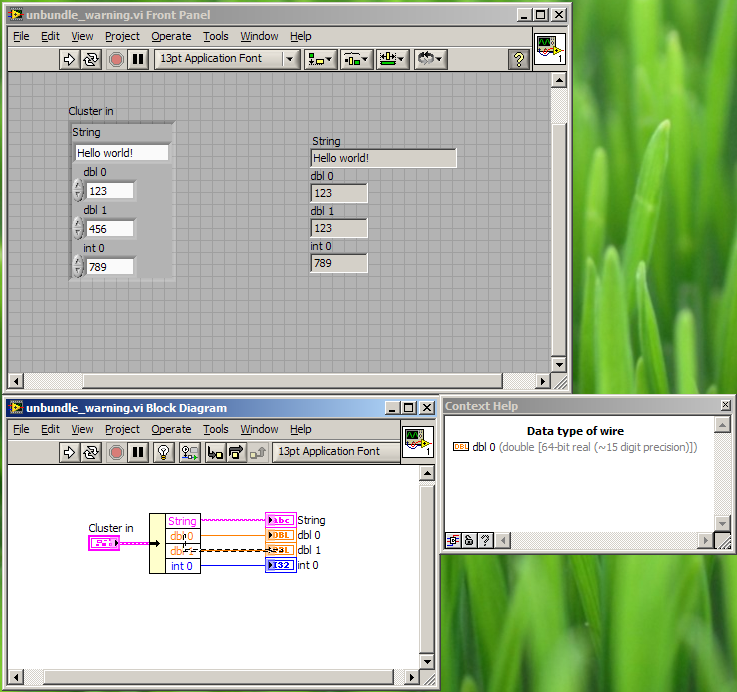
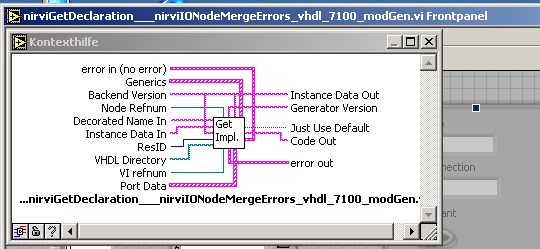
Strange LV crash and open VI-Server port afterwards
in LabVIEW General
Posted
Hi all,
I just had a very strange LV (8.5) crash. I was loading 2 main VIs out of 2 seperate LVprjs. During the load of the second VI LV hanged. After killing LV and trying to restart LV I got the error that the VI-Server port 3363 was in use. No other LV was running at the time. The VIs have several .dlls which are also doing TCPIP on port 31415. These ports kept open too, after killing LV. A quick netstat /a /b showed:
The strange thing was, that I couldn´t find the PID 3052 (checked with taskmgr and ProcessExplorer).
Anyone seen such lost resources with no valid PID? The only fix I had was to reboot Windows (XP Pro, SP2).
Any ideas how this could have happened or where to start searching for a reason?